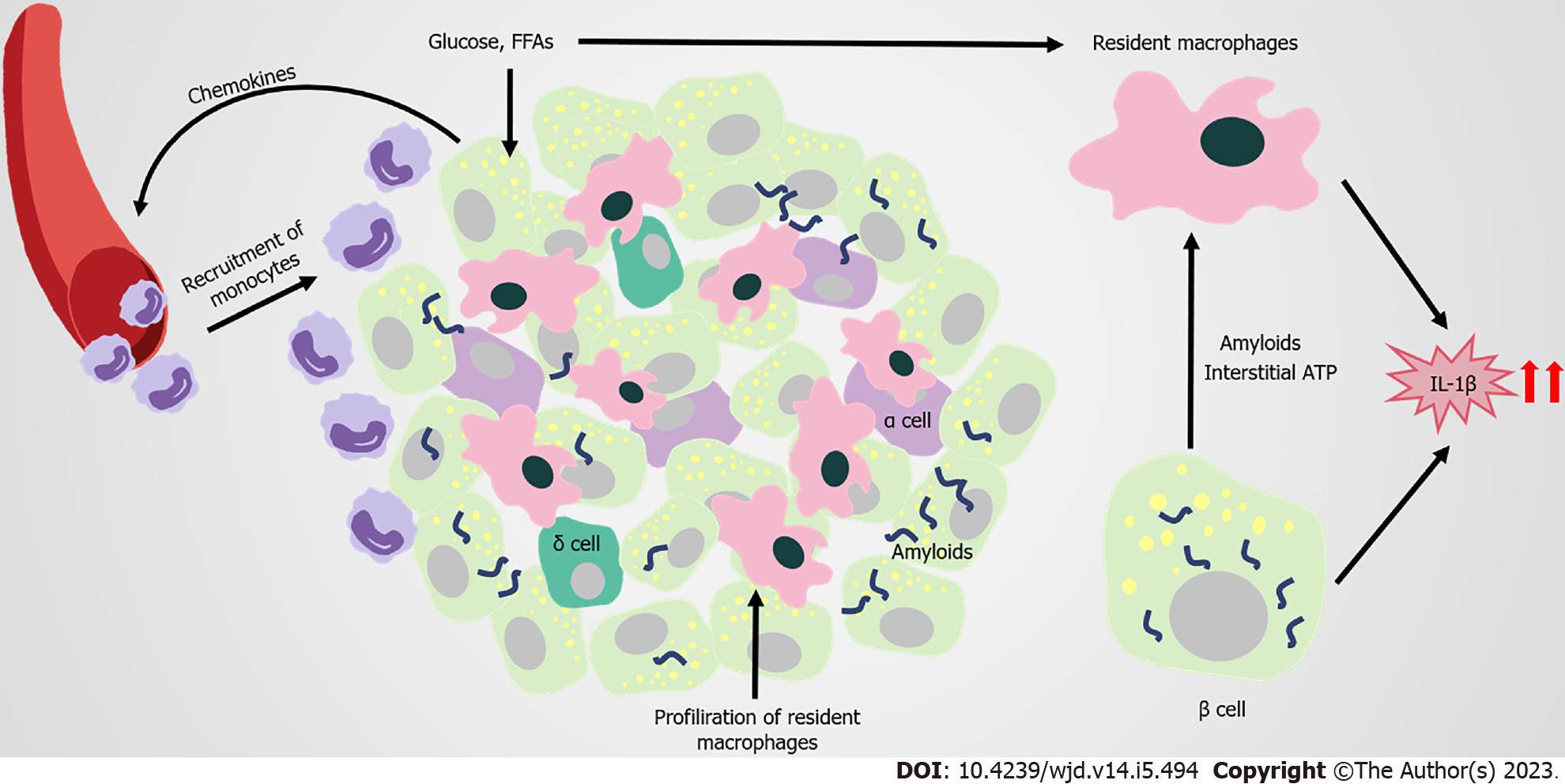Copyright
©The Author(s) 2023.
World J Diabetes. May 15, 2023; 14(5): 494-511
Published online May 15, 2023. doi: 10.4239/wjd.v14.i5.494
Published online May 15, 2023. doi: 10.4239/wjd.v14.i5.494
Figure 4 Immune attack and inflammation in the islet in obesity-related type 2 diabetes.
In obesity and type 2 diabetes mellitus (T2DM), the proliferation of islet resident macrophages causes accumulation of macrophages in islets with elevated inflammatory cytokines and chemokines (such as interleukin-1 beta [IL-1β], tumor necrosis factor-alpha [TNF-a]). Β cells respond to saturated fatty acids recruit Ly6C+ monocytes to the islets; however, these recruited monocytes remain at the boundary of the exocrine and endocrine pancreas. High concentrations of glucose or free fatty acids and amyloids deposition, promote islet macrophages to produce more IL-1β. Glucose-activated insulin and ATP secretion of β cells also trigger the production of cytokines from macrophages. Elevated IL-1β levels can promote inflammation in islets, and are closely related to the development of prediabetes and T2DM. FFAs: Free fatty acids.
- Citation: Wang HW, Tang J, Sun L, Li Z, Deng M, Dai Z. Mechanism of immune attack in the progression of obesity-related type 2 diabetes. World J Diabetes 2023; 14(5): 494-511
- URL: https://www.wjgnet.com/1948-9358/full/v14/i5/494.htm
- DOI: https://dx.doi.org/10.4239/wjd.v14.i5.494









